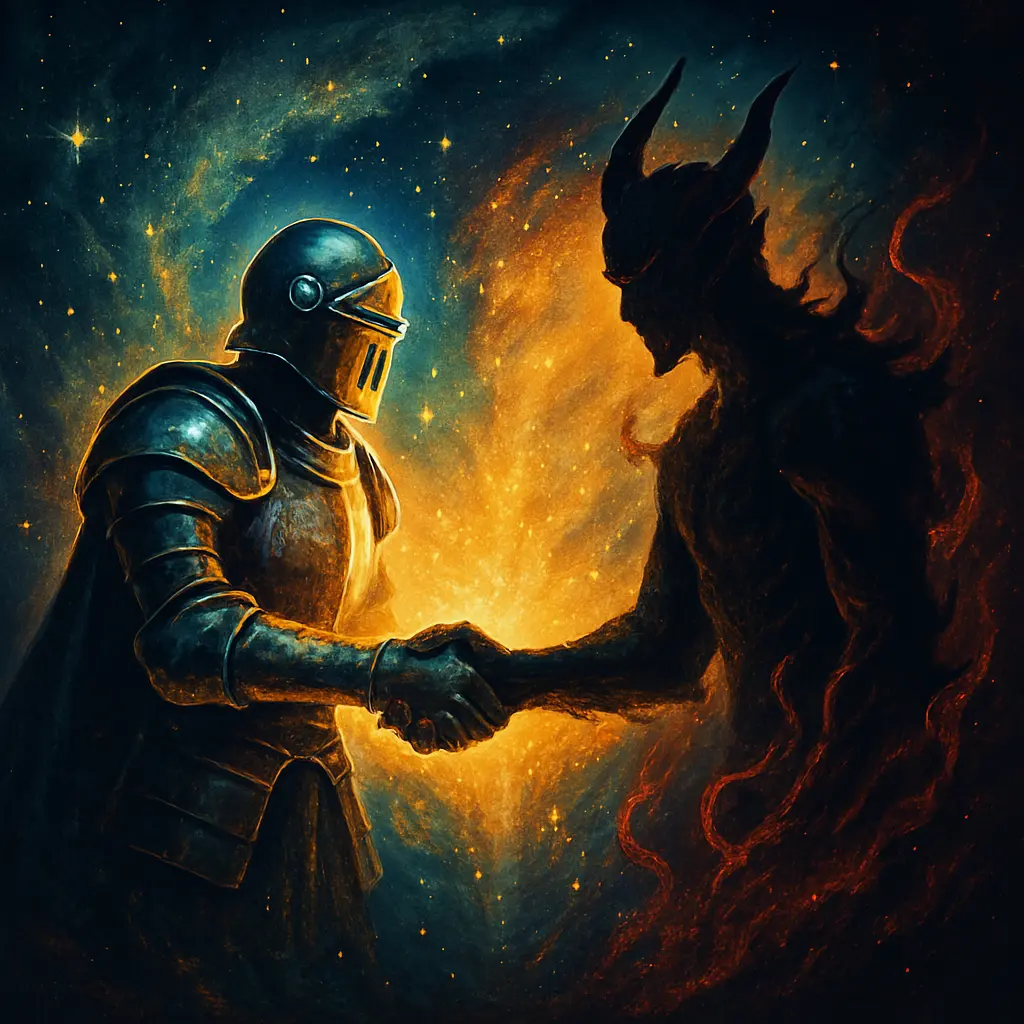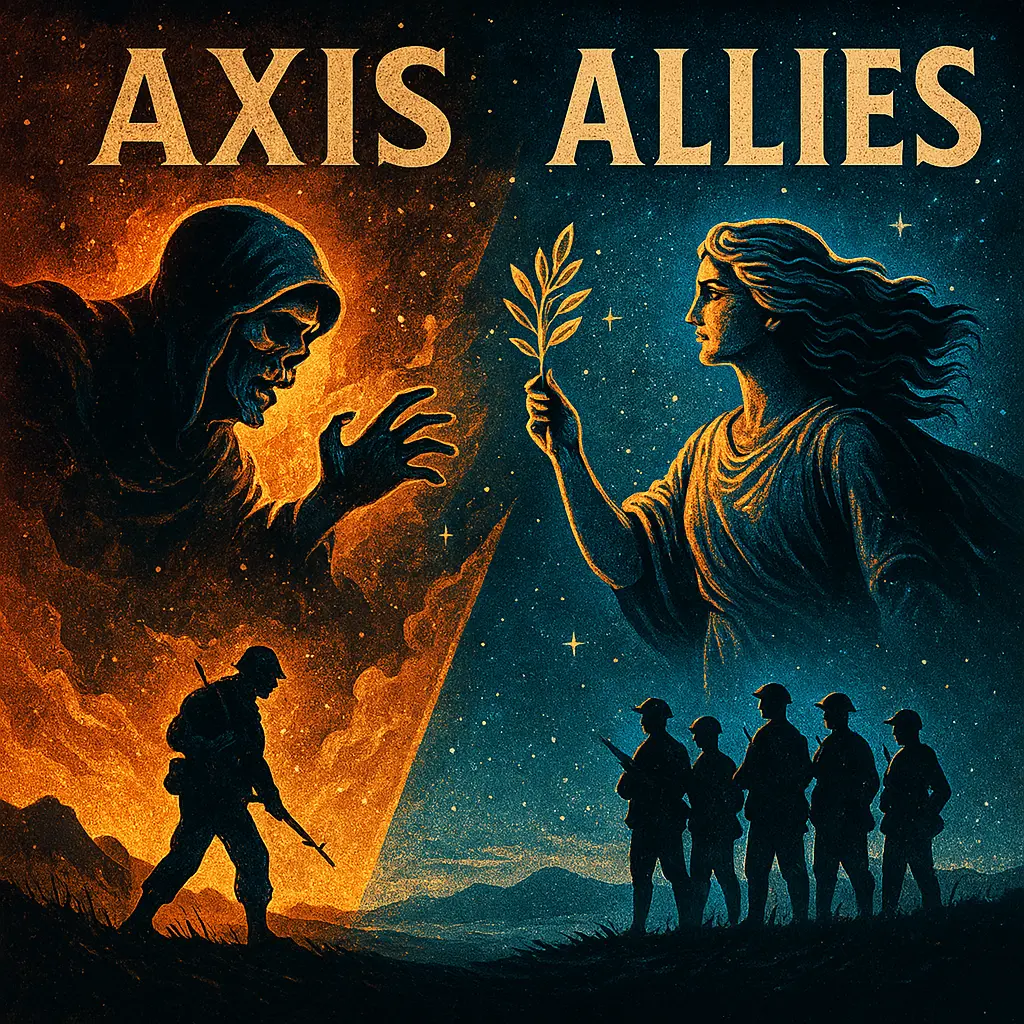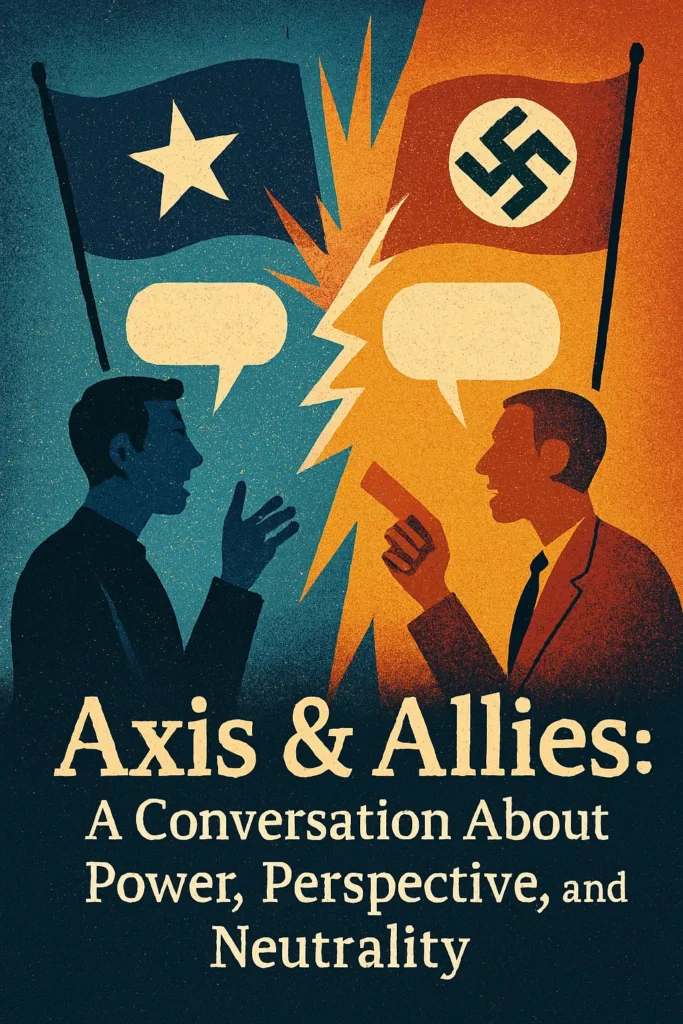Axis & Allies: A Conversation About Power, Perspective, and Neutrality
This conversation dives into the language of global conflict, examining the power behind the labels we assign to alliances, ideologies, and justice. What began as a question about terminology became an exploration of bias, belief, and the limits of neutrality.

Terminology & Historical Framing
Q: What is the reasoning behind calling a group of countries allies as opposed to axis?
A: The term “allies” suggests a partnership based on shared goals, support, and cooperation. In contrast, “axis” has historically represented an alliance of ideological aggression, as with Germany, Italy, and Japan in WWII. The difference lies in intent: one grounded in mutual aid, the other in dominance.
Q: What if your common goals are your ideology?
A: Then the alliance becomes ideologically based. While it’s still a group with common interests, its exclusivity and potential for conflict may grow. Practical cooperation is often broader than ideological alignment.
Q: Doesn’t the word “ally” always sound positive?
A: Yes. “Ally” connotes friendship, unity, and righteousness. This positivity can influence public perception, even when the alliances themselves are complex.
Morality & Perspective
Q: Couldn’t both sides of a war consider each other allies?
A: Technically, yes. Each side sees its partners as allies. But history and victors shape the labels. One side’s “allies” might be the other’s “aggressors.” Language, again, becomes a tool of perspective.
Q: Doesn’t that mean the word itself is spun?
A: It can be. Labels like “allies” or “axis of evil” carry emotional weight. They’re part of broader narratives that frame history in terms of good and bad. Being critical of those narratives is healthy.
Leadership & Judgment
Q: Why do people look to a small group of leaders?
A: People seek guidance, especially in uncertainty. Leaders offer identity, direction, and structure. Culturally and historically, leadership helps societies organize—but it also opens the door for manipulation.
Q: Are judges truly neutral?
A: Judges are expected to be impartial, though they’re shaped by experiences. Systems try to mitigate bias through rules, disclosures, and precedents, but no one is immune to influence. The expectation is fairness, not perfection.
Q: Doesn’t prior experience as a lawyer make neutrality hard?
A: It can. That’s why conflict-of-interest rules exist. Judges are human, and while the system assumes ethical behavior, awareness of past roles is key to preserving impartiality.
Law, Precedent & Change
Q: How can new legal precedents be set if judges follow old ones?
A: Judges may challenge old precedents when societal values shift. Their decisions, once written and accepted, can become new precedent. It’s a slow evolution—but it happens.
Q: What about those affected by now-invalid precedents?
A: It depends. Some get retroactive relief; others don’t. Courts weigh fairness, disruption, and legal stability when deciding whether to apply a new rule to old cases.
Q: Are judges the most powerful in the system?
A: They hold immense power, especially in interpretation. But they’re constrained by law, oversight, and appeals. Their power is balanced—at least in theory—by other branches and public accountability.

The Constitution & Its Interpretation
Q: Aren’t we just interpreting the Constitution differently now?
A: Yes. Originalism, textualism, and the “living Constitution” approach all offer different lenses. As values and social contexts change, so do interpretations. This is both a strength and a source of contention in law.
Q: Can interpretation be right or wrong?
A: It depends on consistency, reasoning, and adherence to constitutional principles. Some interpretations gain acceptance; others fade with time or face strong opposition. The legal process is dynamic, shaped by debate and reform.
